Farmers Occupy the Mall – Winter 1979 by Jo Freeman
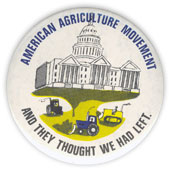 Text based on article published in In These Times Feb. 21-27, 1979, pp. 3, 8.
Text based on article published in In These Times Feb. 21-27, 1979, pp. 3, 8.
Several thousand farmers and over 600 tractors rolled into Washington on February 5, 1979 in the second annual demonstration by the American Agriculture Movement (AAM) to demand higher government support prices for major farm commodities.
 Created by family farmers in 1977, the AAM first brought farmers and their tractors to Washington, D.C. in January of 1978, after a series of tractor rallies in the states. Disappointed with lack of progress on the promises that were made, they returned in February of 1979. |
|---|
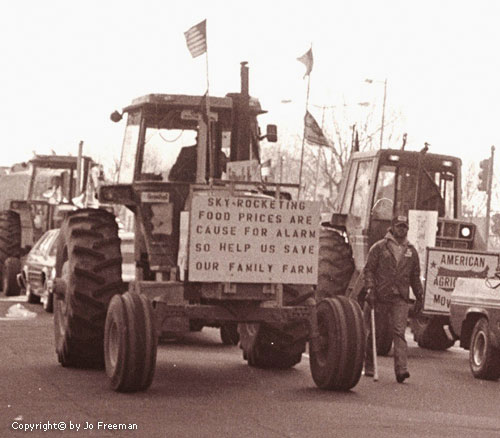 Moving at 15 miles an hour, the farmers deliberately stalled the heavy morning rush hour traffic to attract attention to the economic bind they feel themselves in as a result of rising costs of production and lower prices for farm products. |
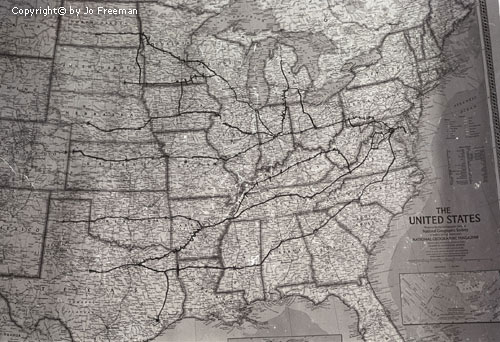 The AAM had locals in 40 states but the tractors came largely from the South and Midwest, hauled on trailers into camps in Maryland and Virginia. There the farmers bided their time until they were ready to roll into town. |
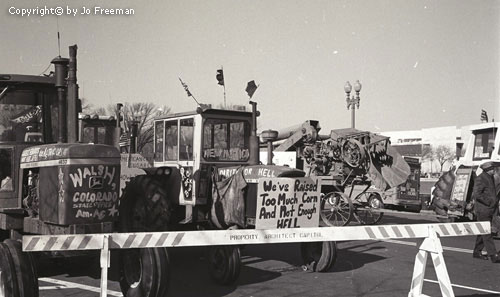 Some came from as far away as Colorado, New Mexico, Oregon and California. |
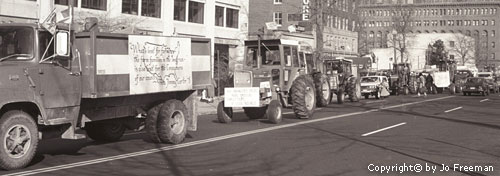 Although routes had been worked out in advance, police found it difficult to control the tractorcade, whose "wagon masters" had no real authority over the drivers. The AAM claimed to have no leadership, dues, or overall organization, relying primarily on consensus decision-making. |
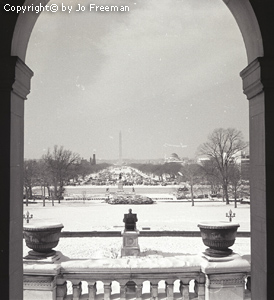  Fearing a long week of traffic snarls, the D.C. police decided to block the entire Mall where the tractors were parked. While the farmers rallied at the Capitol steps, almost 200 city buses and trucks created a corral. This successfully prevented further disruption of rush hour traffic. |
 It also made the farmers angry at "being penned in like animals." When an unmarked cruiser was spotted on the mall, it was "captured" by the tractors. "Now you know how it feels to be trapped," yelled one farmer. Two police officers stepped out of the car smiling, only to be alternately yelled at and slapped on the back. After the cop car was plastered with stickers, its aerials broken, and its tires flattened, it was allowed to leave. The "ransomed" police officers said they didn't ask for assistance when "captured," instead telling police near the area to stay away. "These people weren't going to hurt me," one said. |
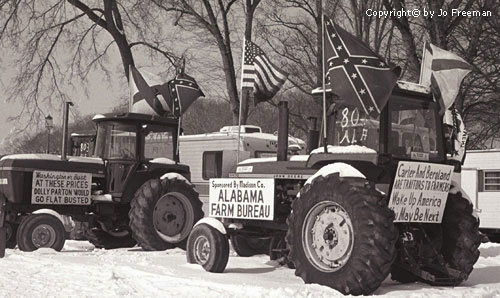 For several days farmers rode their tractors around the Mall repeatedly, mostly out of boredom. A few rammed police cars and motor scooters. When tractors "went wild," police broke windows with billy clubs, tear-gassed the drivers and dragged them out of their cabs, arresting 21. The farmers' response included some racial epithets thrown at the largely black D.C. police force by the white farmers. |
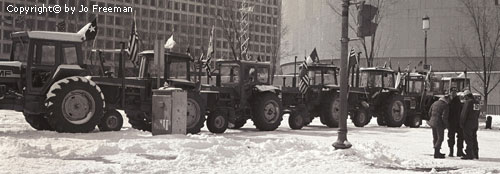 After negotiations, police allowed up to 200 tractors out of the corral to parade around town, provided they did not do so during rush hour. Tractors circled the White House one day and hung out at the Lincoln Memorial on another. The farmers announced that a tractor would be driven through the USDA, an agency the AAM does not feel is sympathetic to its aims. |
 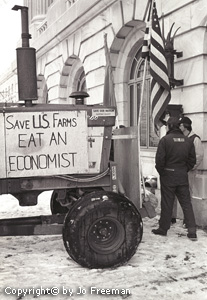 As police and press gathered, a two-foot long toy tractor was pushed through the front door of the USDA, and a 12-ton tractor with a giant scoop rolled toward it as though going through. While the cameras inside focused on the approaching menace, farmers stood just outside the open door, carefully guiding the tractor's driver who stopped within inches of the wall. |
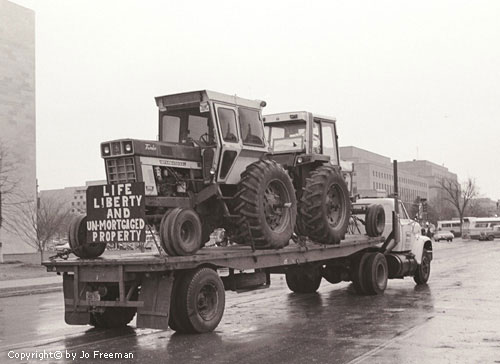 After two weeks of tractor occupation, farmers began loading their tractors onto flatbed trucks and moving out. Estimates of damage to the sod, trees, benches and underground sprinkling system on the Mall ranged from $500,000 to $2 million. When criticized for "destructiveness," one farmer blamed it on the police corral. "If you pen a bull up in a china shop, you've got to expect some damage." A group of Maryland farmers said they would repair the damage when the protest was over. |
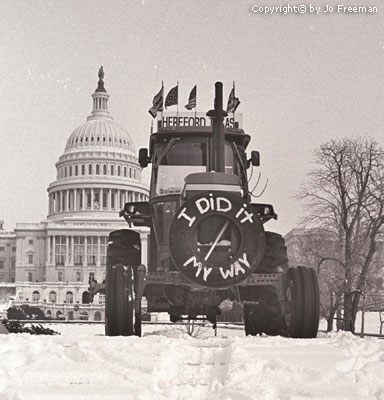 |
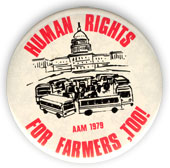 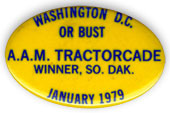 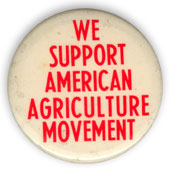 |
To Top
Books by Jo | What's New | About Jo | Photos | Political Buttons
Home | Search | Links | Contact Jo | Articles by Jo